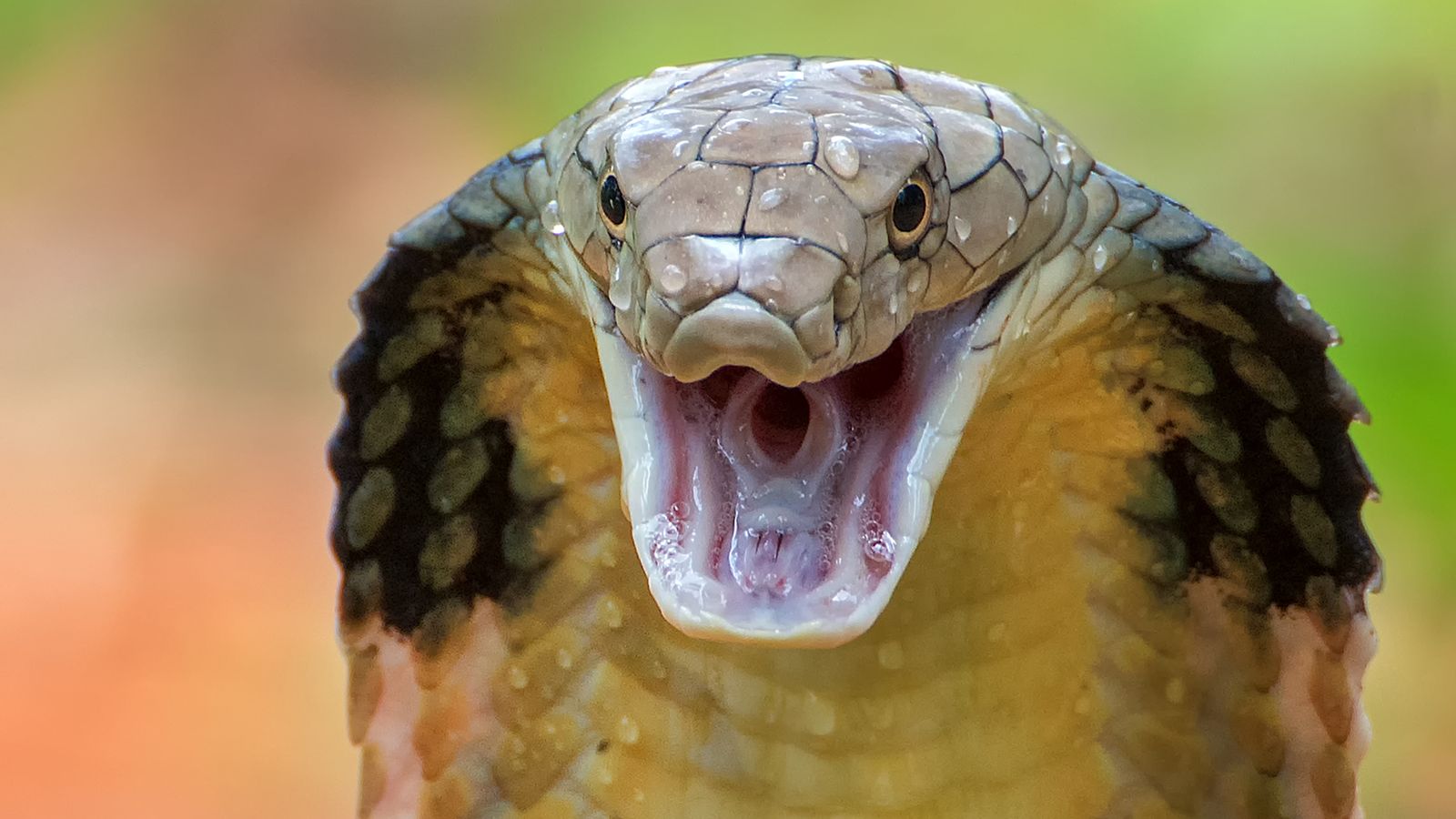Injuries resulting from snakebites are becoming more common, according to a new study.
Doctors said in a report that in the last 11 years they have seen and treated 300 victims, including 72 teenagers or children.
Most made a complete recovery but some had to be treated in intensive care, one patient had part of their finger amputated and another man died due to the bite.
The man who died was a reptile conservationist and had been bitten by a king cobra – the world’s longest venomous snake, the report said.
According to eyewitnesses, after he was bitten the man staggered about “as if drunk” and then collapsed.
Snake venom is a neurotoxin that can stop a person’s breathing and heartbeat.
He died from a cardiac arrest, despite being given 10 vials of antivenom by emergency services.
Tory leadership race live: ‘Hasta la vista, baby’ – Boris Johnson gives final message to PMQs as Rishi Sunak skips it
UK heatwave: Charred remains of homes and cars after fires on UK’s hottest ever day – as public is warned ‘danger isn’t over’
UK weather – live updates: Thunderstorm alert for parts of UK today – as bookies are tipping more ‘extreme heat’ next month
According to doctors in the journal Clinical Toxicology, it is possible he had an allergic reaction to the antidote.
The patient who lost part of their finger kept a snake as a pet and was bitten by the highly venomous species of Mozambique spitting cobra – considered to be one of the most dangerous African snakes.
Their fangs can spray venom up to 3m, with bites being potentially lethal.
There are over 250 venomous snake species, mostly native to Asia, Africa, Latin America and Oceania.
But the UK has three native snake species, the adder, grass snake and smooth snake.
Only the adder is venomous.
While keeping exotic reptiles as pets is not illegal, the RSPCA advises people to research what it entails before buying one.
The charity advises people with a pet python not to handle it “after handling prey as the snake may smell foot and try to bite”.
In the study, researchers found 321 snakebites from 68 species between 2009 and 2020, of which 15 resulted in severe symptoms.
They say that this is an increase in the previously recorded period, between 2004 and 2010.
Professor David Warrell from Oxford University, said: “Most of these bites occur to fingers, hands and wrists following deliberate handling interaction by people who keep snakes as part of their occupation or hobby.”






















